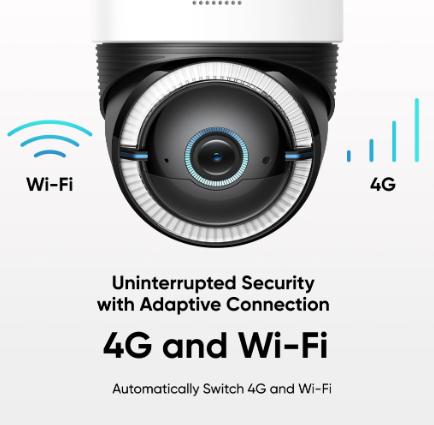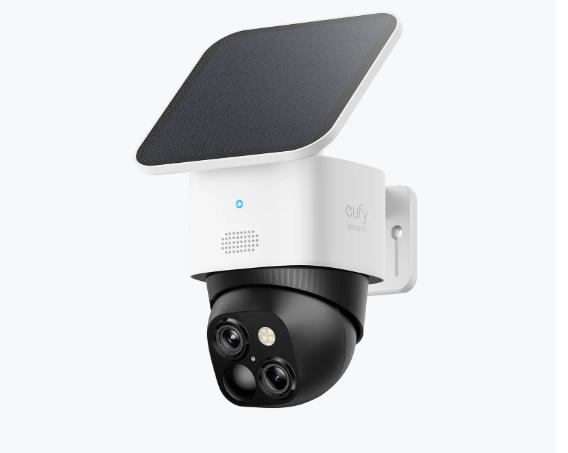WiFi security cameras have become a popular choice for enhancing home security due to their convenience and advanced features. These cameras connect to your home network, allowing you to monitor your property from anywhere with an internet connection. Understanding their functionality, key features, and installation process can help you make an informed decision when choosing the right security camera for your needs. This guide will explore the basics of WiFi security cameras, how they transmit data, their main features, and the benefits they offer, ensuring you have all the information needed to keep your home secure.

What Are WiFi Security Cameras?
Definition and Basic Functionality
WiFi security cameras are surveillance devices that use wireless internet connections to transmit video and audio data. Unlike traditional wired cameras, these devices offer greater flexibility in placement and easier installation. They capture footage in real-time and send it to a connected device, such as a smartphone or computer, via the internet. This allows users to monitor their property remotely, receive alerts, and store recordings for future reference.
Types of WiFi Security Cameras
There are various types of wifi security cameras, each designed for specific purposes. Indoor cameras are compact and ideal for monitoring the interior of your home. Outdoor cameras are weather-resistant and equipped with features like night vision to withstand harsh conditions. Doorbell cameras combine a security camera with a doorbell, allowing you to see and communicate with visitors. Pan-tilt-zoom (PTZ) cameras offer dynamic monitoring with the ability to move and zoom in on specific areas.
How WiFi Security Cameras Transmit Data
WiFi Connectivity and Data Flow
WiFi security cameras connect to your home network via WiFi, allowing them to transmit data wirelessly. Once connected, the camera captures video footage and sends it through your WiFi router to the cloud or a local storage device. The data flow involves encoding the video, compressing it for efficient transmission, and sending it to a designated storage location. Users can access the footage in real-time through a dedicated app or web portal, ensuring they stay informed about their property's security.
Encryption and Security Protocols
To ensure the security of the transmitted data, WiFi security cameras employ encryption and security protocols. Encryption scrambles the data, making it unreadable to unauthorized users. Common encryption standards include WPA2 and WPA3, which protect the data during transmission. Additionally, secure communication protocols, such as SSL/TLS, establish a secure channel between the camera and the storage server. These measures help prevent unauthorized access, ensuring that your video footage remains private and protected from potential cyber threats.
Key Features of WiFi Security Cameras
Motion Detection and Alerts
Motion detection is a crucial feature of WiFi security cameras. These cameras use sensors to detect movement within their field of view. When motion is detected, the camera triggers an alert, sending notifications to the user's device. This feature helps identify suspicious activities and enables quick response to potential security threats. Some advanced cameras also offer customizable motion zones, allowing users to focus on specific areas and reduce false alarms caused by irrelevant movements.
Night Vision Capabilities
Night vision capabilities enable WiFi security cameras to capture clear footage in low-light or dark conditions. Equipped with infrared (IR) LEDs, these cameras emit invisible light that illuminates the area, allowing the camera to record detailed images even in complete darkness. This feature is essential for outdoor surveillance, ensuring continuous monitoring around the clock. High-quality night vision cameras can provide clear images up to a certain distance, enhancing the security of your property during nighttime hours.
Cloud Storage and Local Storage Options
WiFi security cameras offer both cloud storage and local storage options for saving video footage. Cloud storage involves uploading the recorded data to a remote server, providing easy access and ensuring data is safe even if the camera is damaged or stolen. Local storage, on the other hand, uses physical media such as SD cards or network-attached storage (NAS) devices to store the footage. Each option has its advantages: cloud storage offers accessibility and security, while local storage provides control and avoids subscription fees.
Installation and Setup Guide
Choosing the Right Location
Selecting the optimal location for your WiFi security camera is crucial for effective surveillance. Choose a spot with a clear view of the area you want to monitor, avoiding obstructions like walls or large furniture. For outdoor cameras, place them high enough to prevent tampering but within range of your WiFi signal. Ensure the location covers entry points like doors and windows, and consider areas with high foot traffic. Proper placement maximizes the camera's field of view and enhances its ability to detect and record activities.
Step-by-Step Installation Process
1. Mount the Camera: Secure the camera to the chosen location using the provided mounting hardware.
2. Power the Camera: Plug in the camera to a power source or insert batteries if it’s battery-operated.
3. Connect to WiFi: Use the camera's app or web interface to connect it to your home WiFi network.
4. Configure Settings: Customize settings such as motion detection zones, alert preferences, and recording schedules.
5. Test the Camera: Ensure the camera is functioning correctly by checking the live feed and receiving alerts.
Following these steps will help you set up your WiFi security camera efficiently, ensuring optimal performance.

Common Troubleshooting Tips
If you encounter issues with your WiFi security camera, consider these troubleshooting tips. Ensure the camera is within range of your WiFi signal and check for any interference from other devices. Verify that the firmware is up to date and restart the camera and router. If connection problems persist, try repositioning the camera or using a WiFi extender. For poor video quality, adjust the camera settings and ensure the lens is clean. Refer to the user manual for specific error codes and solutions, and contact customer support if needed.
Benefits of Using WiFi Security Cameras
Remote Monitoring and Access
One of the primary benefits of WiFi security cameras is the ability to monitor your property remotely. Using a dedicated app or web portal, you can access live video feeds and recorded footage from anywhere with an internet connection. This feature allows you to keep an eye on your home, receive instant alerts, and take action if necessary, providing peace of mind whether you’re at work, on vacation, or simply away from home. Remote access also enables easy sharing of footage with authorities in case of security incidents.
Integration with Smart Home Systems
WiFi security cameras often integrate seamlessly with smart home systems, enhancing your overall home automation experience. These cameras can connect with devices like smart locks, lights, and voice assistants, allowing you to create comprehensive security solutions. For instance, you can set up routines where the camera triggers lights to turn on when motion is detected or use voice commands to view camera feeds on smart displays. Integration with smart home systems provides added convenience and allows for centralized control of your home’s security and automation features.
Conclusion
WiFi security cameras offer a versatile and effective solution for monitoring your property. Their ability to transmit data wirelessly, combined with features like motion detection, night vision, and remote access, make them a valuable addition to any home security system. By understanding how these cameras work, their key features, and the installation process, you can make an informed decision to enhance your home’s security. Investing in a reliable WiFi security camera ensures that you have a vigilant eye on your property, providing peace of mind and protection against potential threats.







